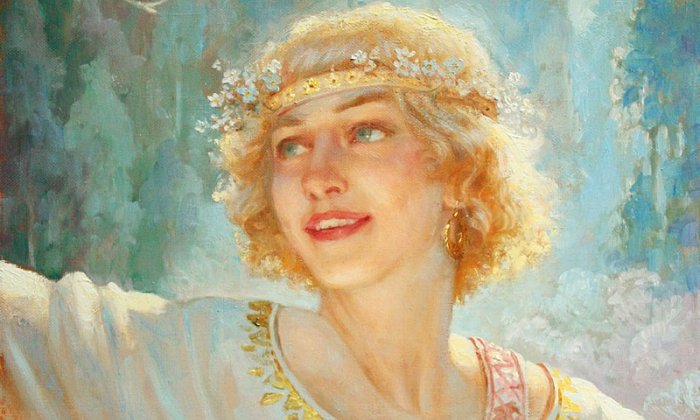Yarilo (Jarilo): Slavic God Of Spring, Powerful Sexual Energy, Symbol Of Dying, Regeneration And Abundance
A.Sutherland - AncientPages.com - Jarilo was an important Slavic deity of spring, fertility, sowing of seed, dying and regeneration, and symbol of high sexual energy, sexual attraction, and passion in all living beings.
Yarilo by Andrey Shishkin - CC BY
In ancient beliefs, he was the lost son of the Slavic god of thunder, Perun. He was stolen from his father and taken to the world of the dead, where he was adopted and raised by Veles, Perun's enemy.
This Slavic deity played an important role in the dawn of Christianity, where Jarilo was the Slavic version of a Dionysos-like god of youth, and spring wearing a crown of flowers, and even Balder, a symbol of the dying and later resurrected god of fertility.
Jarilo was believed to stimulate reproduction taking place in nature, but this influence was extended only to inhabitants of their realm – Yav.
The world of Yav was 4-dimensional and contained people and other living beings. In ancient beliefs of the Slavs, Yav was the world surrounding us, and inside it, there were suns, stars, and solar systems. There were also celestial objects invisible to our senses.
Young Beautiful Man On A White Horse
Jarilo (Yarylo, Jarylo or Gerovit) was portrayed as a beautiful, barefoot young man wearing a long white robe. His head is crowned with a wreath of flowers and he moves around the world on a white horse.
He is seen holding a bunch of wheat ears in his left hand and a skull in his right.
High temples in honor of Yarilo were settled on the top of hills covered with trees. He was widely honored as a patron of all living things but without sacrifices.
The tops of the hills were cleared of vegetation and an idol was erected at this place, in front of which a large white stone was installed, which sometimes could be found at the foot of the hill.
Unlike most other gods, there were no sacrifices in honor of the god of spring. Usually Jarilo was worshiped by songs and dances in the temple. Each year, there were also organized spring festivals dedicated to this warmly welcomed god.
One of the participants was usually dressed up like the god Jarilo himself, and then this person became the center of the whole celebration. Sometimes special figures were made in the image of various people and brought to the temples. Then they were smashed against a white stone installed there.
It is believed it symbolized the blessing of Jarilo from which, both the harvest will be greater and the sexual energy higher.
All of these spring festivals, taking place in late spring or early summer, were basically alike. On a special day, processions of villagers would go around for a walk in the country or through villages.
Something or someone was identified to be Jarilo. a doll made of straw, a man or a child adorned with green branches, or a girl dressed like a man, riding on a horse.
Certain songs were sung which alluded to Jarilo's greatness and power, and his return from a distant land across the sea.
He was always greeted as a bringer of spring sunlight and abundance.
Written by – A. Sutherland - AncientPages.com Senior Staff Writer
Copyright © AncientPages.com All rights reserved. This material may not be published, broadcast, rewritten or redistributed in whole or part without the express written permission of AncientPages.com
More From Ancient Pages
-
 5,000-Year-Old Underground Partly Submerged City Discovered In Turkey’s Cappadocia
Archaeology | Jun 10, 2019
5,000-Year-Old Underground Partly Submerged City Discovered In Turkey’s Cappadocia
Archaeology | Jun 10, 2019 -
 Ancient Secrets Of The Amazon Jungle – Dangerous Expeditions And Hidden Treasures – Part 1
Featured Stories | Mar 1, 2019
Ancient Secrets Of The Amazon Jungle – Dangerous Expeditions And Hidden Treasures – Part 1
Featured Stories | Mar 1, 2019 -
 Unique Ancient Roman Boxing Gloves Discovered Near Hadrian’s Wall – The Only Surviving Example From 120 A.D.
Archaeology | Feb 20, 2018
Unique Ancient Roman Boxing Gloves Discovered Near Hadrian’s Wall – The Only Surviving Example From 120 A.D.
Archaeology | Feb 20, 2018 -
 The Faery Grail Of Hospitality And Accord- The Forgotten Story – Part 1
Featured Stories | Sep 25, 2019
The Faery Grail Of Hospitality And Accord- The Forgotten Story – Part 1
Featured Stories | Sep 25, 2019 -
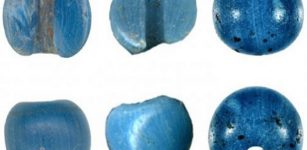 How Did These Beautiful Venetian Glass Beads Reach North America Long Before Columbus?
Archaeology | Feb 15, 2021
How Did These Beautiful Venetian Glass Beads Reach North America Long Before Columbus?
Archaeology | Feb 15, 2021 -
 The Mysterious Metaphysical World Of Isaac Newton
Featured Stories | Aug 21, 2018
The Mysterious Metaphysical World Of Isaac Newton
Featured Stories | Aug 21, 2018 -
 Lost City Of Alexander The Great Found After 2,000 Years In Iraq
Archaeology | Oct 1, 2017
Lost City Of Alexander The Great Found After 2,000 Years In Iraq
Archaeology | Oct 1, 2017 -
 Unexplained Phenomenon Around Yellowstone Puzzles Scientists
Featured Stories | Nov 12, 2018
Unexplained Phenomenon Around Yellowstone Puzzles Scientists
Featured Stories | Nov 12, 2018 -
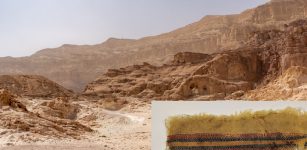 Has An Unknown Ancient ‘Israel Silk Road’ Been Discovered?
Archaeology | Jan 20, 2023
Has An Unknown Ancient ‘Israel Silk Road’ Been Discovered?
Archaeology | Jan 20, 2023 -
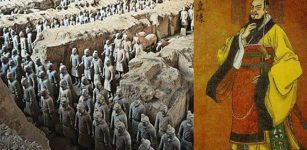 Mysterious History Of Qin Shi Huang – First Emperor Of China
Featured Stories | Jan 17, 2016
Mysterious History Of Qin Shi Huang – First Emperor Of China
Featured Stories | Jan 17, 2016 -
 Fascinating Portable Art From Torre Cave, Gipuzkoa – One Of The Most Complete Specimens From The Entire Iberian Peninsula
Archaeology | May 26, 2023
Fascinating Portable Art From Torre Cave, Gipuzkoa – One Of The Most Complete Specimens From The Entire Iberian Peninsula
Archaeology | May 26, 2023 -
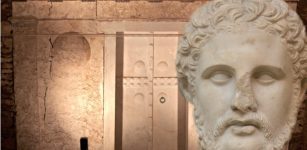 Royal Tombs Of Alexander The Great’s Family At Vergina, Greece Finally Identified
Archaeology | Jan 31, 2024
Royal Tombs Of Alexander The Great’s Family At Vergina, Greece Finally Identified
Archaeology | Jan 31, 2024 -
 Aillén Mac Midgna: Evil Goblin Who Terrorized Sacred Hill Of Tara
Celtic Mythology | Mar 28, 2023
Aillén Mac Midgna: Evil Goblin Who Terrorized Sacred Hill Of Tara
Celtic Mythology | Mar 28, 2023 -
 Sam Bass Became Texas’s Beloved Bandit And Was Admired By The Poor
Featured Stories | Mar 23, 2021
Sam Bass Became Texas’s Beloved Bandit And Was Admired By The Poor
Featured Stories | Mar 23, 2021 -
 Miraculous Cauldrons Of The Ancient Celtic World
Featured Stories | Apr 17, 2024
Miraculous Cauldrons Of The Ancient Celtic World
Featured Stories | Apr 17, 2024 -
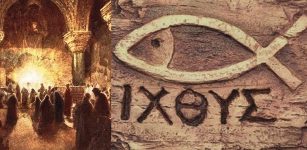 Mysterious Ichthys – Ancient Secret Christian Symbol With A Deep Meaning
Ancient Symbols | Mar 6, 2018
Mysterious Ichthys – Ancient Secret Christian Symbol With A Deep Meaning
Ancient Symbols | Mar 6, 2018 -
 First Genome-Wide Ancient Human DNA From Sudan Shines New Light On Nile Valley Past
Archaeology | Dec 20, 2021
First Genome-Wide Ancient Human DNA From Sudan Shines New Light On Nile Valley Past
Archaeology | Dec 20, 2021 -
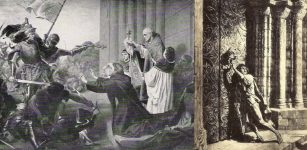 Medieval Criminals Could Avoid Persecution By Claiming Sanctuary In Churches
Ancient History Facts | Mar 3, 2017
Medieval Criminals Could Avoid Persecution By Claiming Sanctuary In Churches
Ancient History Facts | Mar 3, 2017 -
 Being A Roman Emperor Was Dangerous – Only One Of Four Died Of Natural Causes
Archaeology | Nov 12, 2021
Being A Roman Emperor Was Dangerous – Only One Of Four Died Of Natural Causes
Archaeology | Nov 12, 2021 -
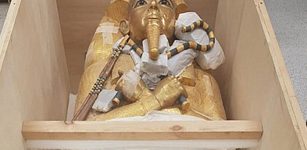 King Tutankhamun’s Large Golden Coffin Was Moved For Restoration
Archaeology | Jul 18, 2019
King Tutankhamun’s Large Golden Coffin Was Moved For Restoration
Archaeology | Jul 18, 2019

